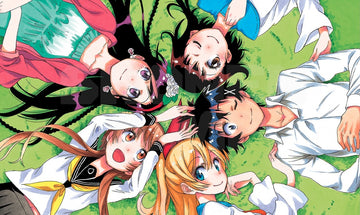Magical girl anime and manga have been a popular genre in Japan for decades, and have gained a significant following around the world. The genre typically features young girls who use magical powers to fight evil and protect the world. Over the years, magical girl anime and manga have evolved to include a variety of different sub-genres, themes, and styles. In this blog post, we'll explore the evolution of magical girl anime and manga and take a closer look at some of its most popular and influential series.
The earliest magical girl anime and manga series, such as Sally the Witch and Mahoutsukai Sally, were produced in the 1960s and 70s. These shows typically featured young girls who could transform into magical creatures or beings and use their powers to help others. These early shows laid the foundation for many of the themes and motifs that would become staples of the genre, such as the use of transformation sequences, the importance of friendship and teamwork, and the use of magical items and weapons.
In the 1980s and 90s, magical girl anime and manga underwent a significant transformation. Shows like Creamy Mami and Magical Angel Creamy Mami featured more complex storylines and character development, and introduced new elements to the genre such as idol culture and time travel. These shows also popularized the use of magical girl mascots, such as the cat-like character Pigu from Magical Princess Minky Momo.
The 1990s also saw the emergence of darker and more mature magical girl series, such as Sailor Moon and Cardcaptor Sakura. These shows dealt with more serious themes and featured more complex characters and storylines. They also helped to popularize the "magical girl warrior" sub-genre, which featured heroines who were more physically and emotionally capable than their predecessors.
In the 2000s and 2010s, magical girl anime and manga continued to evolve and diversify. Shows like Puella Magi Madoka Magica and Yuki Yuna is a Hero took the genre in new and unexpected directions, featuring dark and often tragic storylines that challenged the traditional themes and motifs of the genre. Other shows, such as Pretty Cure and Tokyo Mew Mew, introduced new elements such as team dynamics and environmentalism.
In conclusion, the evolution of magical girl anime and manga has been a fascinating and constantly evolving process. From its humble beginnings in the 1960s to its current status as a beloved and diverse genre, magical girl anime and manga has remained a fixture of the anime and manga landscape. Whether you're a fan of the classic shows or the newer and more experimental series, there's no doubt that magical girl anime and manga will continue to capture the imaginations of audiences for years to come.








